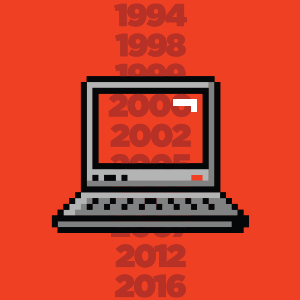The History of the Blog

Blogging is one of the best ways to generate fresh content in a plethora of different contexts and platforms. Today, you could find a blog post on just about anything. This tactful strategy to create relationships between companies and audiences has as short yet developing history. Let’s take a look at the history of the blog.
In 1994,
Justin Hall, journalist and entrepreneur, created the first blog, according to HubSpot. He included a review of HTML examples that he came across, but since the term “blog” had not yet been coined, he referred to it as his personal homepage. Three years later, Jorn Barger pioneered the term “weblog” to describe a log of his internet activity.
After the pioneering efforts of Hall and Barger, resources for bloggers became more popular. Open Diary launched in 1998, which became one of the most pivotal blogging platforms, as it allowed members to comment on other people’s work. In 1999, programmer Peter Merholz shortened the term to what we know today: “blog.”
From there, an increase in blogging opportunities arose as Blogger, LiveJournal and Xanga launched. At the turn of the century, blogging became more popular and even monetized, which began paving the way for more businesses and individuals to take an interest.
In January 2000,
Adam Kontras posted a written blog post along with a video. The following November, Professor Adrian Miles posted, what some think of as, the first video blog, calling it “vog.”
2002 brought on controversy and new launches for blogging. Heather Armstrong blogged about her colleagues on her personal blog and was fired, which sparked the debate of online privacy. Mommy bloggers began to trend as mothers blogged about parenting. Blogads, the first broker of blog advertising, launched, as well as AdSense, WordPress and TypePad the following year, according to Notre Dame of Maryland University.
YouTube launched in 2005 giving video blogs a legitimate place. In that same year, blogger Garrett Graff became the first blogger to gain White House press credentials. Between Graff’s credentials and the launch of Huffington Post, 2005 is when the line between news reporting and blogging began to fade.
2006 and 2007 were the years of microblogging with the launches of Twitter and Tumblr respectively. Twitter urged bloggers to share their content within 140 characters, while Tumblr took a more traditional spin on microblogging.
The 2010s
brought more of a modern feel to blogging as Medium and LinkedIn’s Influencers program were launched in 2012, and WordPress created its .blog domain in 2016.
Today, blogs are everywhere. I mean, you’re reading a blog about the history of blogs. Right now! It’s clear that this isn’t the end of blogging, and it will continue to evolve, especially through businesses in the form of marketing and content creation.








